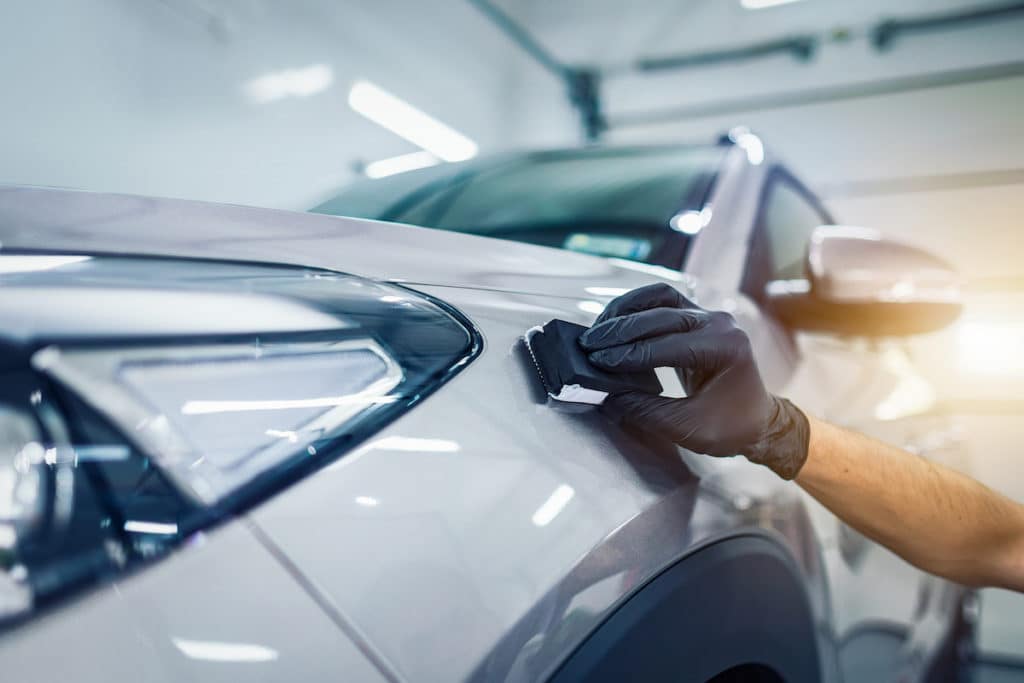Why Ceramic Layer Is the Ultimate Remedy for a Remarkable Finish
Ceramic covering has arised as a leading service for those looking for a perfect finish for their cars, thanks to its amazing sturdiness and safety features. This sophisticated fluid polymer not just bonds flawlessly with factory paint however likewise supplies a formidable obstacle versus typical dangers such as scratches, UV rays, and ecological toxins. In addition, its hydrophobic residential properties streamline maintenance while improving visual appeal. However, recognizing exactly how this technology compares to standard approaches and exploring its application nuances can expose a lot more about its value. What variables really set ceramic finish apart?
What Is Ceramic Finish?

When applied correctly, ceramic finish develops a hydrophobic surface area that pushes back water and dust, making it easier to clean and maintain. Unlike typical waxes or sealers, which usually provide temporary defense, ceramic finishings can last for a number of years, relying on the product high quality and application approach. The procedure of using ceramic coating needs careful prep work, including detailed cleaning and in some cases repaint correction, to ensure ideal bonding and efficiency.
Ceramic finishings are not limited to vehicle surface areas; they can likewise be used on numerous products, including glass, steel, and plastics, offering a versatile remedy for improving protection. In general, ceramic coating represents a considerable advancement in surface security technology, incorporating both practical and visual advantages for a variety of applications.
Benefits of Ceramic Covering
While several surface defense options exist, the advantages of ceramic covering attract attention due to its special residential or commercial properties and resilient efficiency. Among the key benefits is its exceptional durability. Ceramic Coating Philadelphia. Unlike typical wax or sealers that require regular reapplication, ceramic coverings offer a durable layer that can last for several years, significantly reducing upkeep efforts
One more remarkable benefit is boosted protection versus environmental impurities. Ceramic finishes develop a hydrophobic surface area that wards off water, dirt, and numerous toxins, making it simpler to clean. This function not just protects the lorry's look however likewise reduces the danger of rust and oxidation, particularly in harsh climate condition.
Additionally, ceramic coverings provide exceptional resistance to UV rays, preventing fading and deterioration of paint with time. This UV protection is vital for preserving the visual worth of vehicles and surface areas exposed to guide sunshine.
In addition, the shiny finish attained with ceramic layer boosts the general visual allure, giving surface areas a showroom-quality shine. Generally, ceramic coatings stand for a substantial development in surface area security innovation, providing long-lasting advantages that satisfy both practical and visual requirements.
How It Works
Recognizing the scientific research behind ceramic coatings discloses how they provide such impressive defense and longevity. At its core, a ceramic coating is a fluid polymer that chemically bonds with the automobile's manufacturing facility paint. This bonding creates a protective layer that is both hydrophobic and oleophobic, repelling water, dust, and oil. The main part of many ceramic coverings is silicon dioxide (SiO2), which is originated from quartz. This compound contributes to the coating's hardness and resistance to scrapes, UV rays, and environmental contaminants.
The application process involves several actions, including surface area prep work, which is important to accomplishing optimum adhesion. Once used, the covering goes through a healing process, during which it solidifies and creates a semi-permanent bond with the paint surface. This bond is what identifies ceramic finishings from typical waxes and sealants, giving a longer-lasting safety barrier that can endure for several years.
Additionally, the density of the covering can improve its safety qualities, guaranteeing that it can hold up against extreme problems. Inevitably, the science of ceramic layers integrates innovative materials with ingenious application methods to supply an unparalleled level of security and aesthetic enhancement for cars.
Comparison With Standard Approaches
When compared to conventional paint security techniques such as waxes and sealers,The advantages of ceramic finishes come to be specifically noticeable. While waxes offer a temporary shine, commonly lasting a few weeks to a couple of months, ceramic coverings give a long-lasting protective layer that can withstand for several years. This resilience dramatically minimizes the regularity of reapplication, making ceramic coverings see it here a more cost-effective remedy with time.
In addition, typical methods often call for comprehensive prep work and several applications to achieve a sufficient degree of security. On the other hand, ceramic finishes bond at a molecular level with the lorry's surface area, developing a robust guard against ecological pollutants like UV rays, acid rainfall, and road salts. This bond enhances the car's resistance to scrapes and swirl marks, which prevail with standard waxes and sealers.
Moreover, the hydrophobic buildings of ceramic layers ward off water and dust, bring about much easier cleaning and upkeep. On the other hand, wax and sealant-treated surfaces can draw in crud, demanding more constant washing - Ceramic Coating Philadelphia. Overall, ceramic coatings not just provide premium defense however also provide an extra aesthetically attractive and long-lasting finish, establishing them as the preferred selection for discerning vehicle proprietors
Application and Maintenance Tips

Using a foam applicator, apply the finishing in small areas, complying with the manufacturer's guidelines concerning thickness and overlap. Enable sufficient curing time between layers, commonly 24 hr, to make sure correct bonding. After application, it is vital to prevent direct exposure to water or extreme components for at least a week to allow the coating to totally heal.
For maintenance, clean the car frequently with pH-balanced soaps and avoid rough materials. Touchless car cleans are recommended to minimize scratching. Furthermore, making use of a ceramic upkeep spray can enhance the covering's hydrophobic residential or commercial properties and durability. Normal inspections for any signs of advice wear will assist keep the coating's integrity and protect that immaculate finish.
Verdict
In conclusion, ceramic finish emerges as a superior alternative for attaining a perfect vehicle finish. By creating a robust bond with manufacturing facility paint, ceramic finishing successfully shields against scratches, UV rays, and ecological pollutants.
